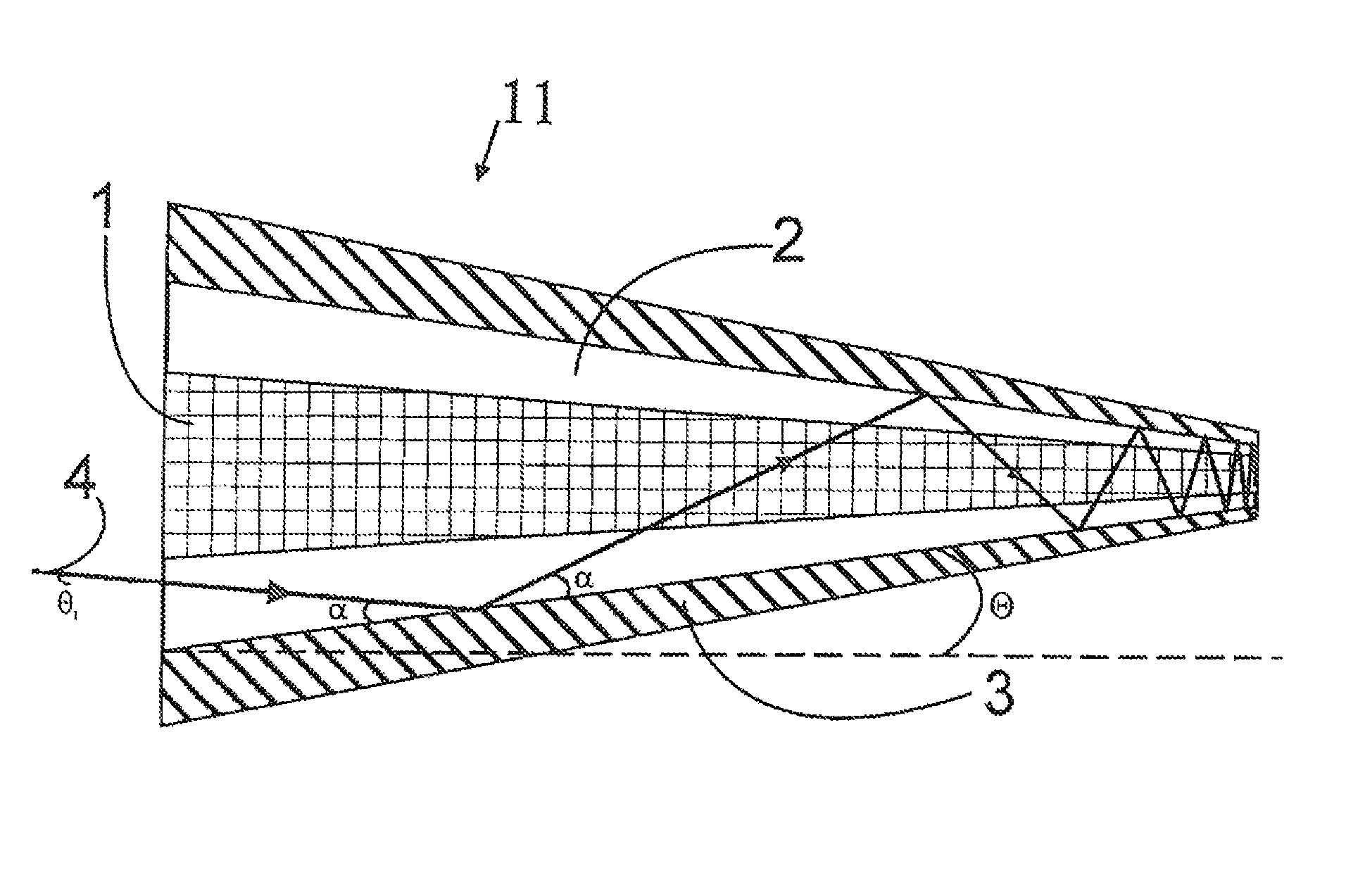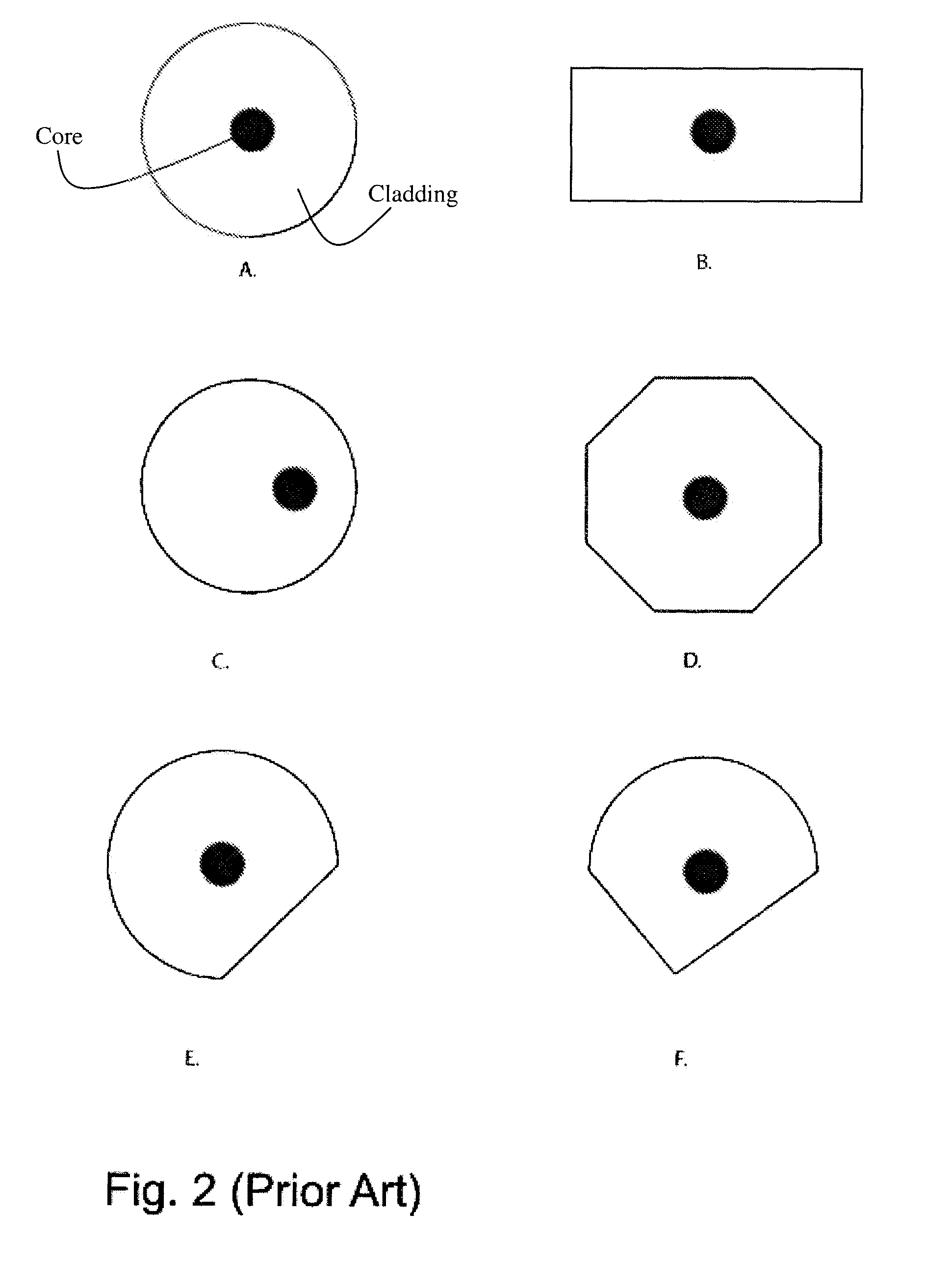Active optical fiber and method for fabricating an active optical fiber
a technology of active optical fiber and active components, which is applied in the field of active optical fiber, optical fiber amplifier and optical fiber laser, can solve the problems of limiting the output power of an active component, affecting so as to achieve stable polarization state, increase the efficiency of active devices, and inherent spectral selectivity
- Summary
- Abstract
- Description
- Claims
- Application Information
AI Technical Summary
Benefits of technology
Problems solved by technology
Method used
Image
Examples
Embodiment Construction
[0043]FIG. 4 shows a longitudinal cross section of a tapered section of a double clad active optical fiber 11 according to one embodiment of the present invention. The section of fiber comprises an active core 1, an inner cladding 2 and an outer cladding 3. The figure further shows the tapering profile 6 of the section of fiber. The tapering profile 6 of the outer cladding 3 of the fiber is presented in terms of the diameter of the section of fiber 11 as a function of the position on the section of fiber 11. In the example of FIG. 4 the tapering profile of all of the aforementioned three layers follows a linear function although other profiles may be utilized as well. Considering the method of manufacturing it is feasible to consider an example where all of the layers of the section of fiber have the same functional dependence for their longitudinal profile. Nevertheless according to the present invention only the core 1 and the inner cladding 2 in which the pump power propagates ne...
PUM
| Property | Measurement | Unit |
|---|---|---|
| core diameter | aaaaa | aaaaa |
| core diameter | aaaaa | aaaaa |
| outer diameter | aaaaa | aaaaa |
Abstract
Description
Claims
Application Information
 Login to View More
Login to View More - R&D
- Intellectual Property
- Life Sciences
- Materials
- Tech Scout
- Unparalleled Data Quality
- Higher Quality Content
- 60% Fewer Hallucinations
Browse by: Latest US Patents, China's latest patents, Technical Efficacy Thesaurus, Application Domain, Technology Topic, Popular Technical Reports.
© 2025 PatSnap. All rights reserved.Legal|Privacy policy|Modern Slavery Act Transparency Statement|Sitemap|About US| Contact US: help@patsnap.com



